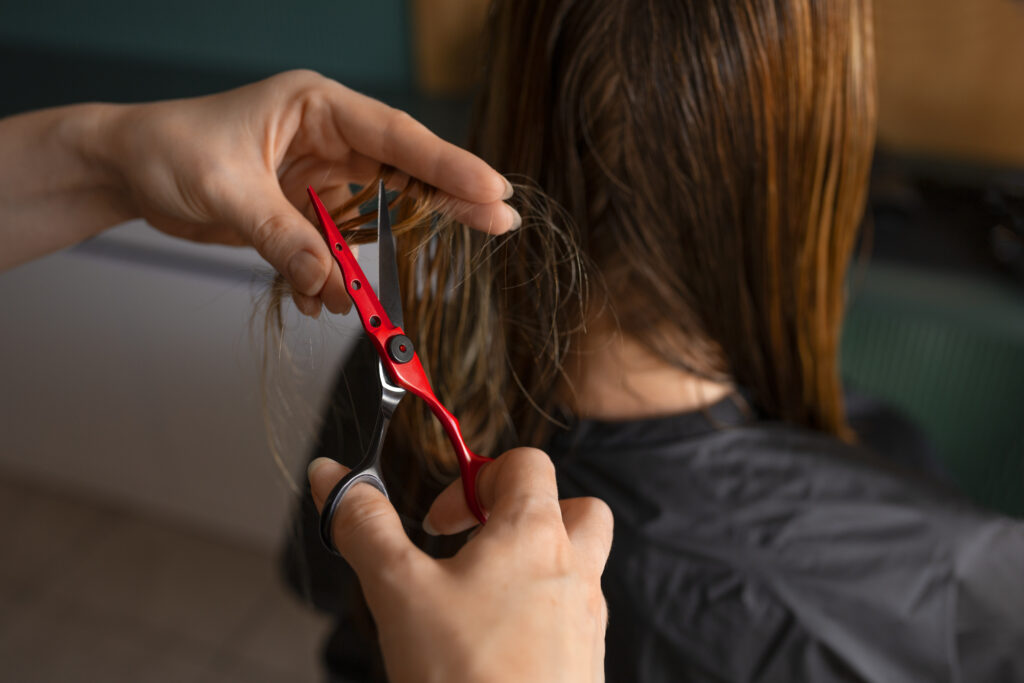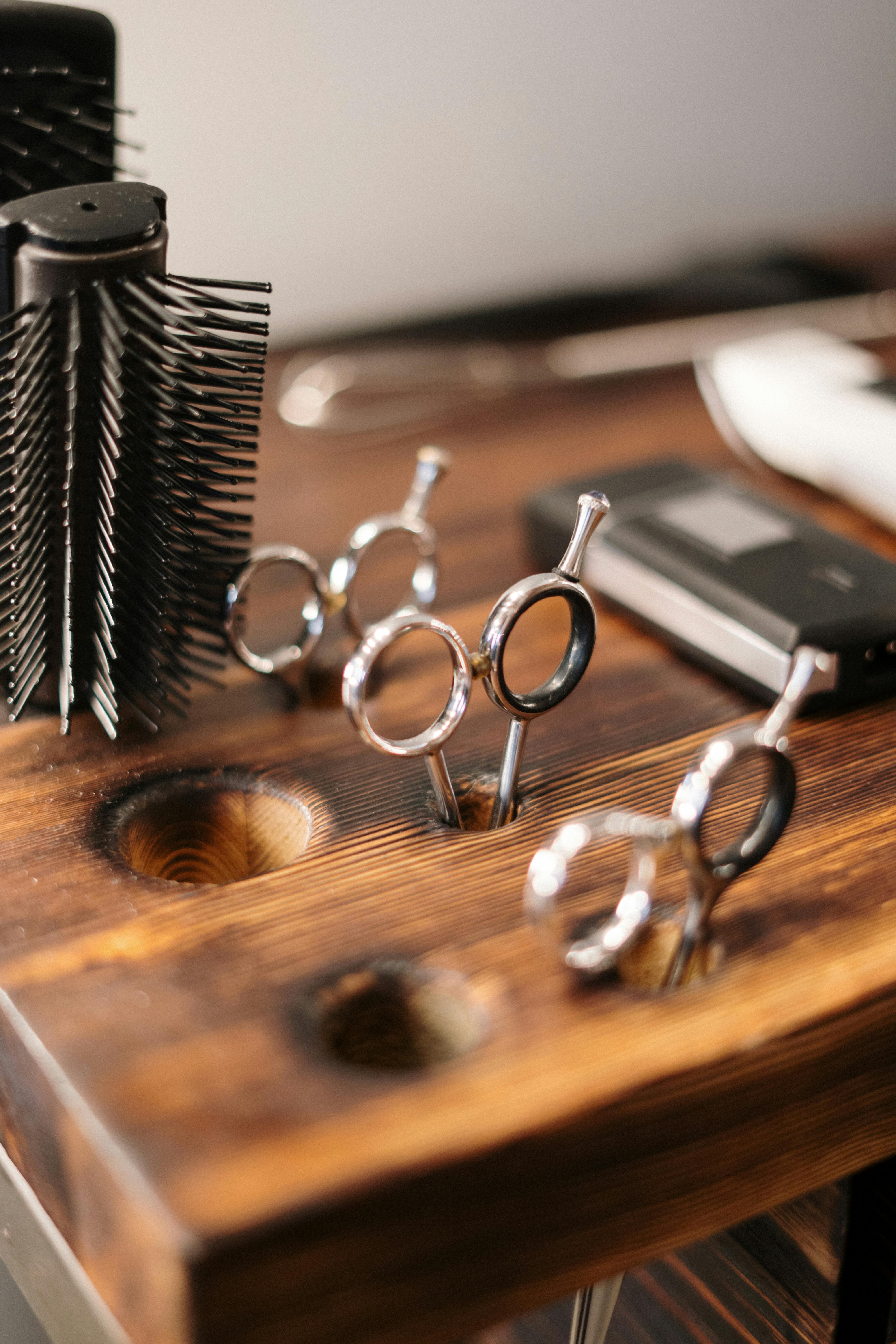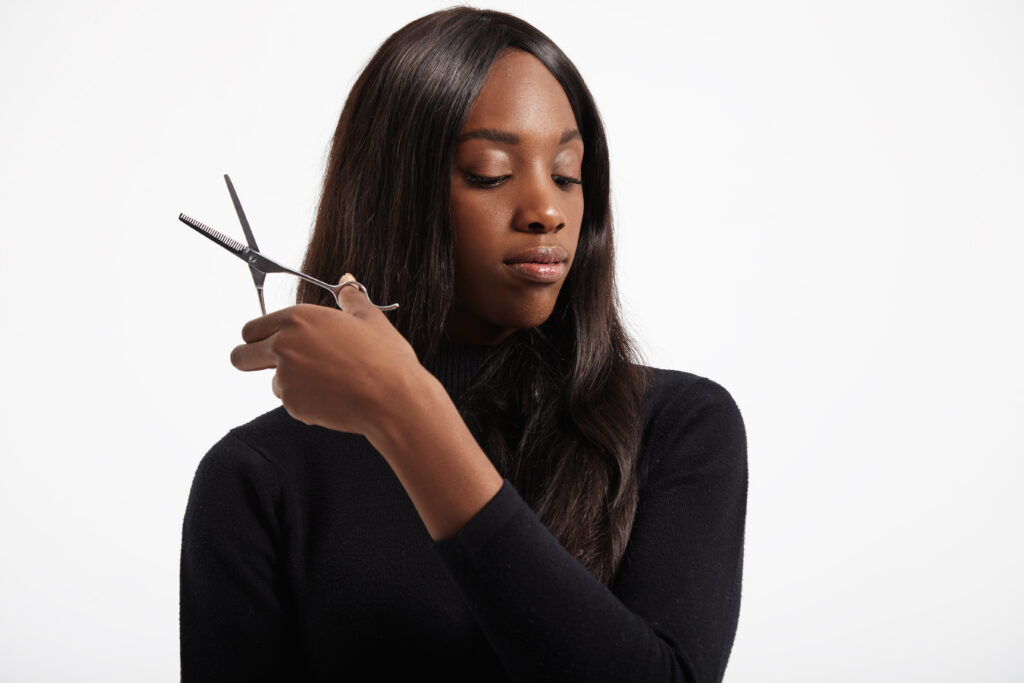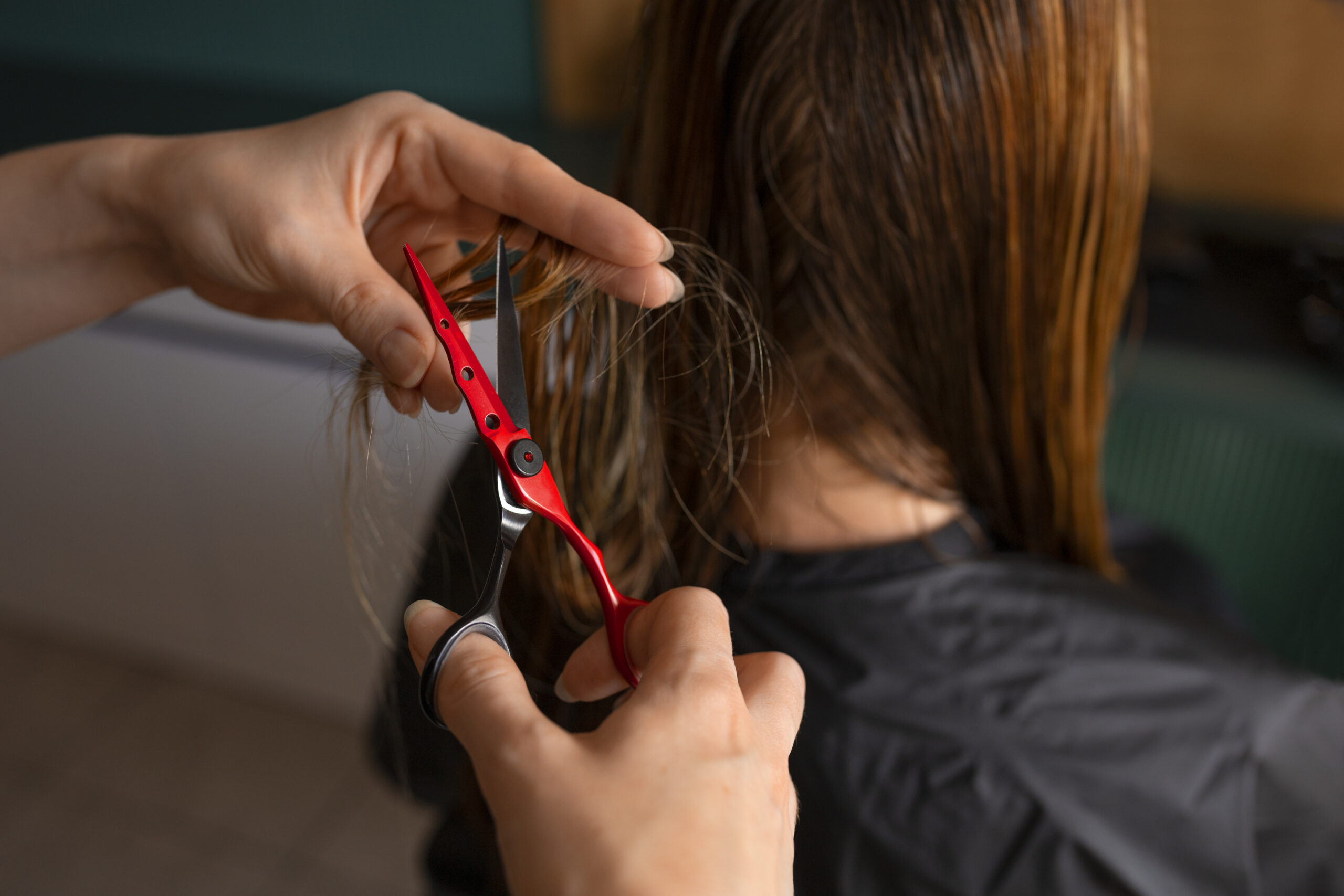
Let’s talk about Trimming today. You must have heard of trimming before now, being identified as a hair care practice and even a ‘hair growth strategy.’ I remember the first time I heard about hair trimming, we were having a session on hair growth and maintenance, and you needed to see the shock on my face when the speaker mentioned ‘Trimming’. I was confused. How can I come to you wanting to grow my hair, and you tell me to trim off the very hair I want to grow?
It didn’t make sense to me then, and it won’t make sense to some of you. However, in this article, you will learn why trimming is good for your hair and how it helps it ‘grow faster’.
Importance of Regular Trims

Regular trims are fundamental to your hair’s health, vitality, and appearance. Let’s look at some of the importance of trimming and why it is always recommended to achieve long hair.
Prevents Split Ends
Split ends occur when the hair shaft splits into two or more strands. It normally occurs at the hair ends and can travel further up the hair shaft, causing damage, breakage, frizz, and unhealthy-looking hair. If your hair has split ends, it will definitely hinder length retention and hair growth.
Split ends cannot be repaired or treated. The only solution is to trim off the affected ends to have equal, defined, and healthy hair. Once the ends are trimmed, your hair can grow normally without fraying off and causing damage.
Promotes Hair Growth
With regular trimming, your hair is allowed to grow in a healthy way. You should note that trimming on its own does not stimulate faster hair growth. Hair growth happens at the hair follicles, not at the ends. Trimming is said to help achieve long hair because it helps to get rid of split ends, which hinder hair growth.
Maintains Hair Texture
Trimming helps maintain hair texture by removing dry, brittle, or damaged ends. This keeps hair looking smooth, soft, and more manageable.
Prevents Tangling and Knots
4c hair is very prone to tangles and knots, which can be difficult to detangle and lead to breakage. Trimming eliminates these damaged ends, reducing tangling and making hair easier to work with.
Improves Hair Appearance
Regular trims keep hair looking fresh and well-maintained. Removing split ends, tangles, knots, and damaged strands enhances the overall appearance of hair, making it look healthier, shinier, and more vibrant.
Enhances Styling
Healthy hair holds styles better and responds more effectively to various styling techniques, such as blow-drying, straightening, or curling. Trimming helps maintain your hair, allowing you to achieve your desired hairstyle easily.
Prevents Hair Damage
Split ends and damaged hair are more susceptible to environmental damage, such as sun exposure, pollution, and heat styling. Trimming regularly helps remove these weak areas, reducing the risk of further damage and preserving the overall health of your hair.
Balances Hair Length
Trimming ensures that your hair remains at a consistent length, preventing uneven growth and maintaining a balanced look. This is especially important if you’re growing out your hair or trying to maintain a specific hairstyle. Balancing the hair length also makes the hair appear fuller and neater.
Boosts Confidence
Healthy, well-groomed hair can significantly boost one’s confidence and self-esteem. Regular trims help one feel more confident in one’s appearance, knowing that one’s hair looks its best.
Tips for Identifying When to Trim

Even though trimming is a very important part of hair care, that does not mean it should be done every day, or weekly. Knowing when it’s time for a trim is essential for maintaining the health and appearance of your hair. While the frequency of trims may vary depending on factors such as your hair type, texture, and styling practices, several indicators signal the need for a trim. Some of them are listed below:
Split Ends
When you notice split ends on your hair, it indicates the need for a trim. As we established earlier, split ends cannot be treated, so the earlier you trim them off, the better for you and your hair. Regularly inspect your hair for split ends, which often appear as frayed or split strands. If you notice an abundance of split ends, it’s a sign that a trim is overdue.
Tangling and Knots
Excessive tangling and knotting, especially at the ends of your hair, suggest it’s time for a trim. Trimming eliminates tangles and prevents them from worsening, reducing the risk of breakage. So, consider getting a trim whenever you have those serious tangles and knots.
Dryness and Brittle Texture
Dry, brittle hair that lacks elasticity is indicative of damage and dehydration. If your hair feels rough to the touch and prone to breakage, it may be time for a trim to remove damaged ends and restore moisture balance.
Lack of Length Retention
If you notice that your hair growth seems stagnant or that you’re not retaining length despite your efforts, it could be due to the presence of split ends and damage. Try trimming to remove those dead ends.
How Often should you Trim?

When it comes to trimming, there is no one-size-fits-all answer. Trimming your hair every 4-6 months is generally recommended to prevent split ends and keep tangles at bay. However, the frequency may vary depending on your hair type, length, and how well you care for it. If you notice more split ends or tangles, you might need to trim them more frequently.
Other Techniques for Length Retention

In addition to regular trims, employing effective length retention strategies is key to maximizing hair growth and achieving your desired length. Here are some tried-and-tested techniques to help you retain length:
Proper Detangling Methods
The way you detangle your hair plays a huge part in its overall length. To retain length, learn to detangle your hair properly using a wide tooth comb or by finger detangling. Also, make sure to moisturize before detangling.
Protective Styling
Protective hairstyles such as braids, twists, buns, and updos shield your hair from environmental stressors and manipulation, minimizing breakage and promoting length retention. Be sure to choose gentle styles on your hair and scalp, and avoid excessive tension or pulling.
Moisture and Hydration
Proper hydration is essential for maintaining hair’s elasticity and strength. Incorporate moisturizing treatments such as deep conditioning masks, leave-in conditioners, and natural oils into your routine to keep your strands hydrated and supple. This helps prevent dryness and breakage, which hinders growth and length retention.
Gentle Handling
Handle your hair with care to prevent unnecessary breakage and damage. Use wide-tooth combs or your fingers to detangle, and avoid aggressive brushing or styling techniques that can cause stress on the hair shaft. Also, make sure to patronize hair stylists who are well-trained on how to handle natural hair.
Scalp Health
A healthy scalp is the foundation for strong, resilient hair growth. Keep your scalp clean and free from buildup by washing regularly with a gentle shampoo. Additionally, massage your scalp regularly to stimulate blood circulation and promote optimal hair growth.
Balanced Diet
Nutrient-rich foods provide the essential vitamins and minerals needed for healthy hair growth. To nourish your hair from the inside out, incorporate a balanced diet rich in protein, vitamins A, C, and E, omega-3 fatty acids, and biotin.











